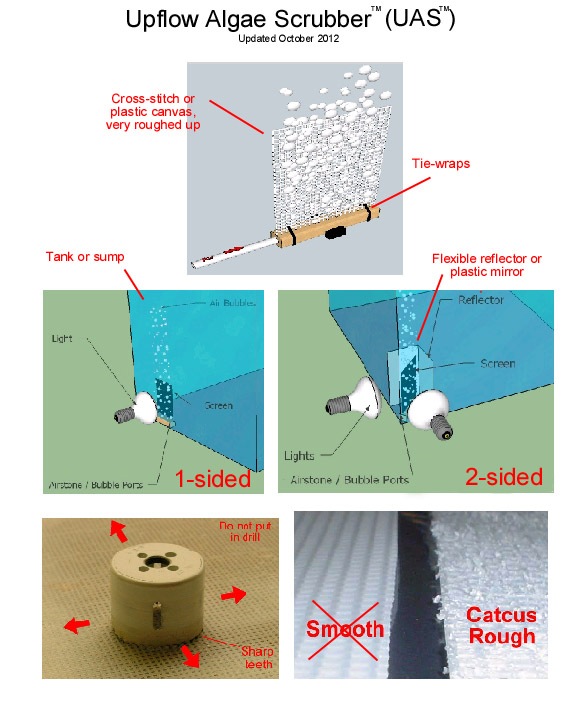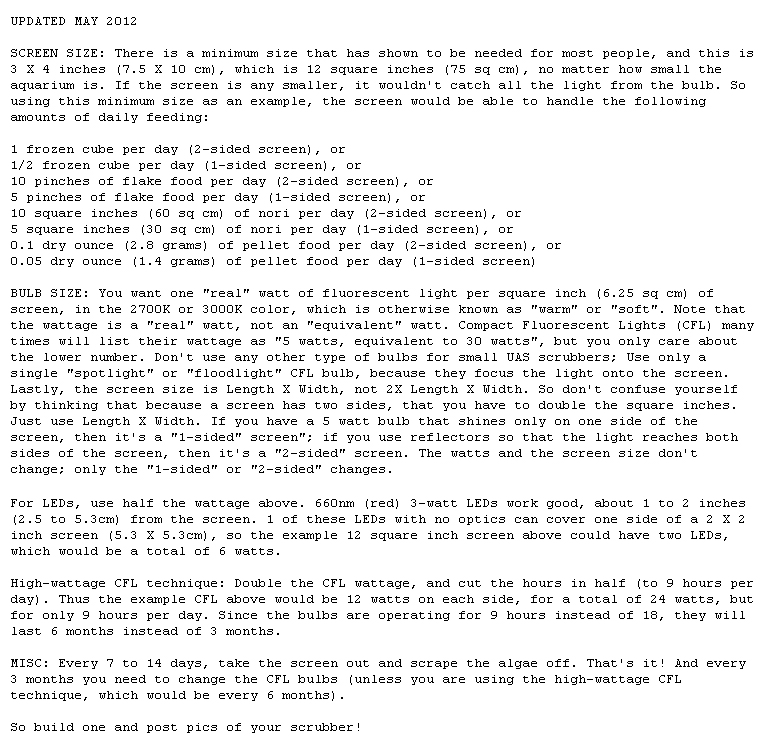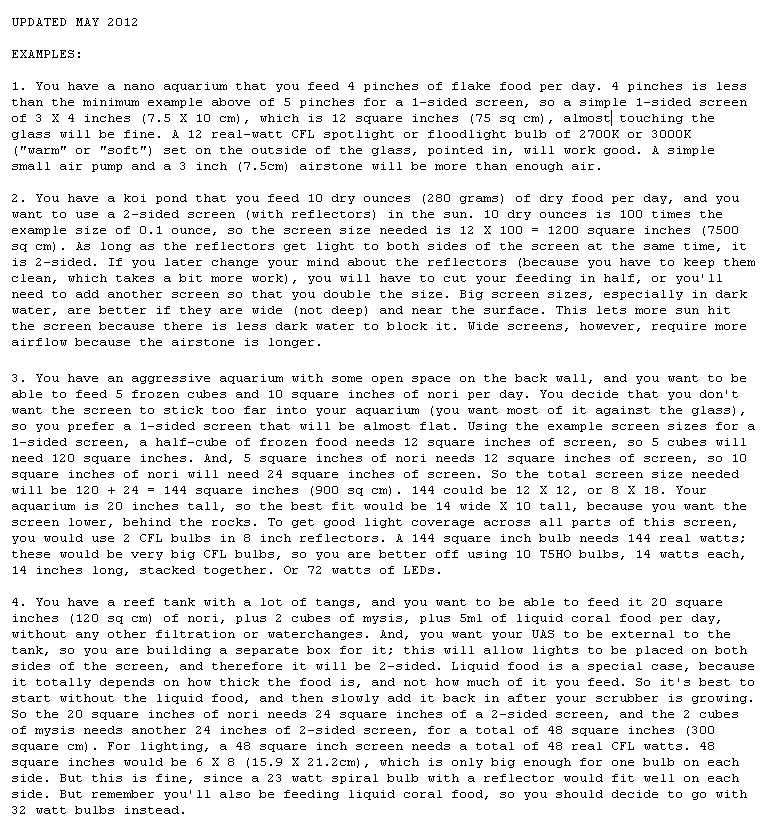Would it not be easier to get your nutrients under control? Overfeeding phosphates etc. are main causes of algae growth. They can be kept in check with proper care.
This is the same thing that goes through my head every time I get a thread update and I see the thread title. Heheh. Conservative thinking like this will get you nowhere!! :nono:
I stock my tanks so that I can feed all I want and still don't have problems. (Dang...there goes my secret!)
In seriousness, I do think the algae scrubber is both a novel, and worthy, approach to "do something" about out-of-control nutrients for all those systems out there which are overstocked. (Almost everyone.) More interesting than carbon dosing or the last 10 GFO reactors I've seen...
-Matt




















